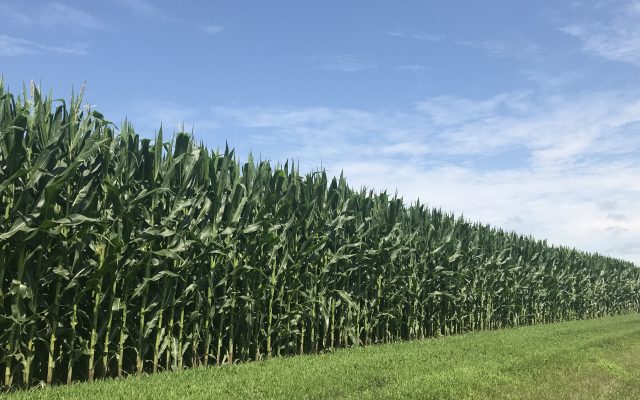As drought grips the Midwest, growers weigh fungicide use

With 2023 planting complete, growers are turning their attention to managing their in-season inputs, and one of the key decisions remaining this year is whether or not to use a fungicide. With much of the Midwest currently under moderate to exceptional drought conditions, growers may be debating if applying a fungicide is worth it since dry conditions can limit disease pressure.
“Growers are asking if it will be worth it to spray a fungicide this year, but the question should actually be if they can afford not to,” said Logan Romines, Syngenta fungicide product lead. “The disease risk this year may be lower, but choosing the right fungicide can still help preserve yield under drought conditions. With the Syngenta portfolio of fungicides, like Miravis® Neo, Miravis Top, Miravis Ace and Trivapro®, growers can expect cleaner and greener fields with higher yield and return on investment potential.”
By choosing a fungicide with both exceptional disease control and proven plant-health benefits, growers can expect stronger, healthier plants ― even under drought conditions. Why? It all comes down to three pillars: light absorption, water conservation and harvest efficiency.
“Better water conservation with Syngenta plant-health fungicides means a lower transpiration rate in the leaves, minimized water vapor loss in the crop, better moisture retention, and a more efficient use of water ― which is key in a drought,” said Tyler Harp, Syngenta fungicide technical product lead. “Leaves that are greener can then capture more light energy from the sun. When combined, improved water conservation and a more efficient use of light energy ensure a healthier and more productive crop that will maximize grain fill and higher potential yield.”
In the last five years, 2020 was the driest summer and 2021 was the wettest1. But in both scenarios, the Syngenta Cleaner & Greener fungicide portfolio still showed excellent performance and improved yields over untreated acres. In the dry conditions of 2020, Miravis Neo and Trivapro delivered an average 14.1 bushels per acre (bu/A) yield increase over untreated; and in the wet, tar-spot-heavy conditions of 2021, they delivered an average 17.2 bu/A increase over untreated2. “That’s why choosing a fungicide with both exceptional disease control and proven plant-health benefits will be key in 2023 to stop drought or disease from drying up your yield,” Harp said.
Romines agreed. “Years of trials have shown these Cleaner & Greener fungicides deliver consistently healthier plants with higher potential yield,” he said. “When Mother Nature is inconsistent, the results from Syngenta fungicides aren’t. The data shows ADEPIDYN technology found in our Miravis brand family and SOLATENOL technology found in Trivapro ultimately will preserve your yield and help put the odds in your favor for higher profitability.”
Want to learn more about how Cleaner & Greener fungicides work? Watch this video in which Harp and Romines explain the science behind boosting bushels with the Syngenta fungicide portfolio.
Interested in how Cleaner & Greener fungicides can boost your bottom line? Try our Miravis Revenue Calculator to see how you can unlock your potential return on investment. Join the conversation online ― connect with Syngenta at Syngenta-us.com/social.

